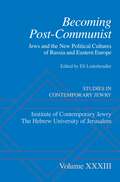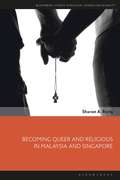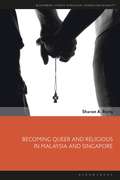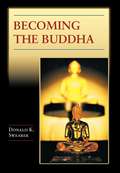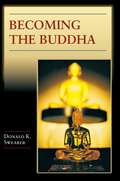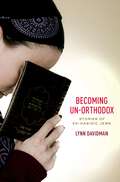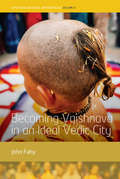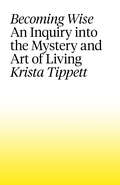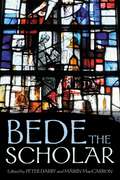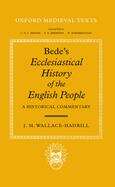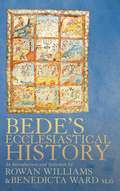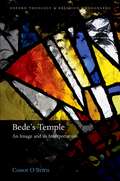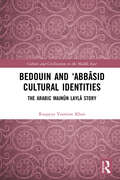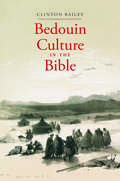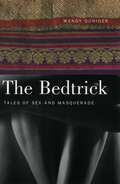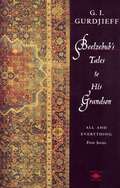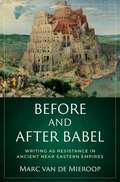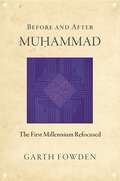- Table View
- List View
Becoming Post-Communist: Jews And The New Political Cultures Of Russia And Eastern Europe (STUDIES IN CONTEMPORARY JEWRY)
by Eli LederhendlerThe closing decade of the 20th century witnessed dramatic upheavals across landscapes that had, until 1939, housed most of the world's Jewish population: the overturning of the East European Communist governments and the fall of the USSR, accompanied by a major Jewish emigration movement. The legacy of the Jewish presence in those countries, and the ways in which it became enmeshed in the quest by people of the region--Jews and non-Jews alike--to secure their future, highlights fundamental issues about the politics of memory, national identity, and the relative stability of regimes in the region. If those questions were important even before the Russian invasion of Ukraine in 2022, understanding their implications now seems even more crucial. In a field fraught with conflicting narratives, the challenges of social and political reconstruction are primary concerns for peoples and governments. The experts contributing to this volume apply interdisciplinary approaches to analyze and interpret a multiplicity of post-communist social realities and aid our understanding of recent events.
Becoming Post-Communist: Jews And The New Political Cultures Of Russia And Eastern Europe (STUDIES IN CONTEMPORARY JEWRY)
by Eli LederhendlerThe closing decade of the 20th century witnessed dramatic upheavals across landscapes that had, until 1939, housed most of the world's Jewish population: the overturning of the East European Communist governments and the fall of the USSR, accompanied by a major Jewish emigration movement. The legacy of the Jewish presence in those countries, and the ways in which it became enmeshed in the quest by people of the region--Jews and non-Jews alike--to secure their future, highlights fundamental issues about the politics of memory, national identity, and the relative stability of regimes in the region. If those questions were important even before the Russian invasion of Ukraine in 2022, understanding their implications now seems even more crucial. In a field fraught with conflicting narratives, the challenges of social and political reconstruction are primary concerns for peoples and governments. The experts contributing to this volume apply interdisciplinary approaches to analyze and interpret a multiplicity of post-communist social realities and aid our understanding of recent events.
Becoming Queer and Religious in Malaysia and Singapore (Bloomsbury Studies in Religion, Gender, and Sexuality)
by Sharon A. BongWhat does it mean to become religiously queer or queerly religious in one's everyday life? What narratives of becoming 'person' emerge from these lived realities? Sharon A. Bong addresses these questions by exploring the personal journeys of several GLBTIQ (Gay, Lesbian, Bisexual, Transgender, Intersex and Queer) persons negotiating the tensions between living out their sexuality and religiosity in the context of Malaysia and Singapore. By sharing their stories, Bong presents a broad spectrum of queer strategies emerging from participants' narratives of 'becoming', which encompass becoming Asian, becoming postcolonial, becoming sexually religious and religiously sexual, and becoming 'persons'. These strategies are used in the book as counterpoints to nationhood narratives of becoming Asian or postcolonial, which are still mired in religious-sponsored and colonial-inherited sexual regulations. Finally, Bong shows how the insistence of identifying as both queer and religious is critical in challenging the conservative social-political milieu surrounding issues of gender diversity and inclusion within these south-east Asian states.
Becoming Queer and Religious in Malaysia and Singapore (Bloomsbury Studies in Religion, Gender, and Sexuality)
by Sharon A. BongWhat does it mean to become religiously queer or queerly religious in one's everyday life? What narratives of becoming 'person' emerge from these lived realities? Sharon A. Bong addresses these questions by exploring the personal journeys of several GLBTIQ (Gay, Lesbian, Bisexual, Transgender, Intersex and Queer) persons negotiating the tensions between living out their sexuality and religiosity in the context of Malaysia and Singapore. By sharing their stories, Bong presents a broad spectrum of queer strategies emerging from participants' narratives of 'becoming', which encompass becoming Asian, becoming postcolonial, becoming sexually religious and religiously sexual, and becoming 'persons'. These strategies are used in the book as counterpoints to nationhood narratives of becoming Asian or postcolonial, which are still mired in religious-sponsored and colonial-inherited sexual regulations. Finally, Bong shows how the insistence of identifying as both queer and religious is critical in challenging the conservative social-political milieu surrounding issues of gender diversity and inclusion within these south-east Asian states.
Becoming the Buddha: The Ritual of Image Consecration in Thailand (PDF)
by Donald K. SwearerBecoming the Buddha is the first book-length study of a key ritual of Buddhist practice in Asia: the consecration of a Buddha image or "new Buddha," a ceremony by which the Buddha becomes present or alive. Through a richly detailed, accessible exploration of this ritual in northern Thailand, an exploration that stands apart from standard text-based or anthropological approaches, Donald Swearer makes a major contribution to our understanding of the Buddha image, its role in Buddhist devotional life, and its relationship to the veneration of Buddha relics. Blending ethnography, analysis, and Buddhist texts related to this mimetic reenactment of the night of the Buddha's enlightenment, he demonstrates that the image becomes the Buddha's surrogate by being invested with the Buddha's story and charged with the extraordinary power of Buddhahood. The process by which this transformation occurs through chant, sermon, meditation, and the presence of charismatic monks is at the heart of this book. Known as "opening the eyes of the Buddha," image consecration traditions throughout Buddhist Asia share much in common. Within the cultural context of northern Thailand, Becoming the Buddha illuminates scriptural accounts of the making of the first Buddha image; looks at debates over the ritual's historical origin, at Buddhological insights achieved, and at the hermeneutics of absence and presence; and provides a thematic comparison of several Buddhist traditions.
Becoming the Buddha: The Ritual of Image Consecration in Thailand (Buddhisms: A Princeton University Press Series #13)
by Donald K. SwearerBecoming the Buddha is the first book-length study of a key ritual of Buddhist practice in Asia: the consecration of a Buddha image or "new Buddha," a ceremony by which the Buddha becomes present or alive. Through a richly detailed, accessible exploration of this ritual in northern Thailand, an exploration that stands apart from standard text-based or anthropological approaches, Donald Swearer makes a major contribution to our understanding of the Buddha image, its role in Buddhist devotional life, and its relationship to the veneration of Buddha relics. Blending ethnography, analysis, and Buddhist texts related to this mimetic reenactment of the night of the Buddha's enlightenment, he demonstrates that the image becomes the Buddha's surrogate by being invested with the Buddha's story and charged with the extraordinary power of Buddhahood. The process by which this transformation occurs through chant, sermon, meditation, and the presence of charismatic monks is at the heart of this book. Known as "opening the eyes of the Buddha," image consecration traditions throughout Buddhist Asia share much in common. Within the cultural context of northern Thailand, Becoming the Buddha illuminates scriptural accounts of the making of the first Buddha image; looks at debates over the ritual's historical origin, at Buddhological insights achieved, and at the hermeneutics of absence and presence; and provides a thematic comparison of several Buddhist traditions.
Becoming Un-Orthodox: Stories of Ex-Hasidic Jews
by Lynn DavidmanLeaving a religion is not merely a matter of losing or rejecting faith. For many, it involves dramatic changes of everyday routines and personal habits. Davidman bases her analysis on in-depth conversations with forty ex-Hasidic individuals. From these conversations emerge accounts of the great fear, angst, and sense of danger that come of leaving a highly bounded enclave community. Many of those interviewed spoke of feeling marginal in their own communities; of strain in their homes due to death, divorce, or their parents' profound religious differences; experienced sexual, physical, or verbal abuse; or expressed an acute awareness of gender inequality, the dissimilar lives of their secular relatives, and forbidden television shows, movies, websites, and books. Becoming Un-Orthodox draws much-needed attention to the vital role of the body and bodily behavior in religious practices. It is through physical rituals and routines that the members of a religion, particularly a highly conservative one, constantly create, perform, and reinforce the culture of the religion. Because of the many observances and daily rituals required by their faith, Hasidic defectors are an exemplary case study for exploring the centrality of the body in shaping, maintaining, and shedding religions. This book provides both a moving narrative of the struggles of Hasidic defectors and a compelling call for greater collective understanding of the complex significance of the body in society.
Becoming Un-Orthodox: Stories of Ex-Hasidic Jews
by Lynn DavidmanLeaving a religion is not merely a matter of losing or rejecting faith. For many, it involves dramatic changes of everyday routines and personal habits. Davidman bases her analysis on in-depth conversations with forty ex-Hasidic individuals. From these conversations emerge accounts of the great fear, angst, and sense of danger that come of leaving a highly bounded enclave community. Many of those interviewed spoke of feeling marginal in their own communities; of strain in their homes due to death, divorce, or their parents' profound religious differences; experienced sexual, physical, or verbal abuse; or expressed an acute awareness of gender inequality, the dissimilar lives of their secular relatives, and forbidden television shows, movies, websites, and books. Becoming Un-Orthodox draws much-needed attention to the vital role of the body and bodily behavior in religious practices. It is through physical rituals and routines that the members of a religion, particularly a highly conservative one, constantly create, perform, and reinforce the culture of the religion. Because of the many observances and daily rituals required by their faith, Hasidic defectors are an exemplary case study for exploring the centrality of the body in shaping, maintaining, and shedding religions. This book provides both a moving narrative of the struggles of Hasidic defectors and a compelling call for greater collective understanding of the complex significance of the body in society.
Becoming Vaishnava in an Ideal Vedic City (WYSE Series in Social Anthropology #9)
by John FahyBecoming Vaishnava in an Ideal Vedic City centers on a growing multinational community of ISKCON (International Society for Krishna Consciousness) devotees in Mayapur, West Bengal. While ISKCON’s history is often presented in terms of an Indian guru ‘transplanting’ Indian spirituality to the West, this book focusses on the efforts to bring ISKCON back to India. Paying particular attention to devotees’ failure to consistently live up to ISKCON’s ideals and the ongoing struggle to realize the utopian vision of an ‘ideal Vedic city’, this book argues that the anthropology of ethics must account for how moral systems accommodate the problem of moral failure.
Becoming Wise: An Inquiry into the Mystery and the Art of Living
by Krista TippettPeabody Award-winning broadcaster and National Humanities Medalist Krista Tippett has interviewed the most extraordinary voices examining the great questions of meaning for our time. The heart of her work on her national public radio program and podcast, On Being, has been to shine a light on people whose insights kindle in us a sense of wonder and courage. Scientists in a variety of fields; theologians from an array of faiths; poets, activists, and many others have all opened themselves up to Tippett's compassionate yet searching conversation. In Becoming Wise, Tippett distills the insights she has gleaned from this luminous conversation in its many dimensions into a coherent narrative journey, over time and from mind to mind. The book is a master class in living, curated by Tippett and accompanied by a delightfully ecumenical dream team of teaching faculty. The open questions and challenges of our time are intimate and civilizational all at once, Tippett says - definitions of when life begins and when death happens, of the meaning of community and family and identity, of our relationships to technology and through technology. The wisdom we seek emerges through the raw materials of the everyday. And the enduring question of what it means to be human has now become inextricable from the question of who we are to each other. This book offers a grounded and fiercely hopeful vision of humanity for this century - of personal growth but also renewed public life and human spiritual evolution. It insists on the possibility of a common life for this century marked by resilience and redemption, with beauty as a core moral value and civility and love as muscular practice. Krista Tippett's great gift, in her work and in Becoming Wise, is to avoid reductive simplifications but still find the golden threads that weave people and ideas together into a shimmering braid. One powerful common denominator of the lessons imparted to Tippett is the gift of presence, of the exhilaration of engagement with life for its own sake, not as a means to an end. But presence does not mean passivity or acceptance of the status quo. Indeed Tippett and her teachers are people whose work meets, and often drives, powerful forces of change alive in the world today. In the end, perhaps the greatest blessing conveyed by the lessons of spiritual genius Tippett harvests in Becoming Wise is the strength to meet the world where it really is, and then to make it better.
Bede the scholar
by Peter Darby Máirín MacCarronDistilling a decade of research by leading experts on the Venerable Bede, Bede the scholar investigates the Northumbrian monk’s place within the wider intellectual developments of the early medieval world. Demonstrating the centrality of the Bible to his scholarship, chapters focus on Bede’s engagement with scriptural languages, his knowledge and use of earlier works of Latin literature, and a pastoral commitment to teaching and preaching. The book breaks new ground for our understanding of Bede’s self image by investigating his famous Ecclesiastical history of the English people alongside lesser-known works such as the Martyrology, the commentary On Genesis, and the chapter headings he developed for different parts of the Vulgate Bible. Contributors highlight the importance of appreciating Bede’s work within its local setting: the kingdom of Northumbria and the monastery of Wearmouth, whose founders, Benedict Biscop and Ceolfrith, inspired Bede in various ways. The monastery provided an environment in which Bede could flourish, and where he contributed to an intellectual enterprise which also generated the Codex Amiatinus, the earliest one-volume Vulgate to survive fully intact.Combining rigorous scholarly research with a celebration of the depth and complexity of Bede’s work, Bede the scholar deepens our understanding of the scholarly programme undertaken by one of the most important intellectual figures of the early middle ages.
Bede the scholar
by Peter Darby and Máirín MacCarronDistilling a decade of research by leading experts on the Venerable Bede, Bede the scholar investigates the Northumbrian monk’s place within the wider intellectual developments of the early medieval world. Demonstrating the centrality of the Bible to his scholarship, chapters focus on Bede’s engagement with scriptural languages, his knowledge and use of earlier works of Latin literature, and a pastoral commitment to teaching and preaching. The book breaks new ground for our understanding of Bede’s self image by investigating his famous Ecclesiastical history of the English people alongside lesser-known works such as the Martyrology, the commentary On Genesis, and the chapter headings he developed for different parts of the Vulgate Bible. Contributors highlight the importance of appreciating Bede’s work within its local setting: the kingdom of Northumbria and the monastery of Wearmouth, whose founders, Benedict Biscop and Ceolfrith, inspired Bede in various ways. The monastery provided an environment in which Bede could flourish, and where he contributed to an intellectual enterprise which also generated the Codex Amiatinus, the earliest one-volume Vulgate to survive fully intact.Combining rigorous scholarly research with a celebration of the depth and complexity of Bede’s work, Bede the scholar deepens our understanding of the scholarly programme undertaken by one of the most important intellectual figures of the early middle ages.
Bede's Ecclesiastical History Of The English People: A Historical Commentary (Oxford Medieval Texts)
by J. M. Wallace-HadrillBede's Ecclesiastical History of the English People is recognized as a masterpiece among the historical literature of medieval England and Europe. Completed in 731, it comprises in a single flowing narrative a coherent history of the conversion of the English peoples to Christianity, and thestory of the island kingdoms and churches from the 590s to the early eighth century, prefaced by a sketch of the earlier history of Britain. In 1969 the Clarendon Press published the new edition in Oxford Medieval Texts, edited by Bertram Colgrave and Sir Roger Mynors. Mynors's masterly text and textual introduction replaced much of Charles Plummer's great edition of 1896; but the historical notes did not attempt to match in scale anddetail Plummer's second volume of commentary. To fill this gap the late Professor J. M. Wallace-Hadrill devoted the last years of his life to a new commentary, one of the finest and most mature fruits of his scholarship - more succinct than Plummer, tauter, more relevant, above all drawing togetherand adding to the findings of a galaxy of modern scholars. Prepared for the press by Thomas Charles-Edwards, helped by Patrick Wormald and others, this book completes the new Bede, and is prefaced by a paper characteristic of Professor Wallace-Hadrill on 'Bede and Plummer'.
Bede's Ecclesiastical History of the English People: An Introduction and Selection
by Benedicta Ward Rowan WilliamsBede's best known work, An Ecclesiastical History of the English People, was written in Latin and is not immediately easy to understand and follow. Yet it is a key text for any student of English history. Rowan Williams shows in his introduction how Bede works to create a sense of national destiny for the new English kingdoms of the seventh century, a sense that has helped to shape English self-awareness through the centuries, by using the imagery both of imperial Rome and of biblical Israel. But Bede also wrestles with the difficult question of how the Church relates to and serves the political order. The attraction and fascination of his work is partly in seeing the tension between the strategic use of wealth and political power for religious ends and the example of self-effacing service and simplicity of life offered by some of Bede's greatest Christian heroes. The issues around these questions are not academic or antiquarian. Understanding Bede is a key to understanding British society in the present as well as the past.
Bede's Ecclesiastical History of the English People: An Introduction and Selection
by Rowan Williams Benedicta WardBede's best known work, An Ecclesiastical History of the English People, was written in Latin and is not immediately easy to understand and follow. Yet it is a key text for any student of English history. Rowan Williams shows in his introduction how Bede works to create a sense of national destiny for the new English kingdoms of the seventh century, a sense that has helped to shape English self-awareness through the centuries, by using the imagery both of imperial Rome and of biblical Israel. But Bede also wrestles with the difficult question of how the Church relates to and serves the political order. The attraction and fascination of his work is partly in seeing the tension between the strategic use of wealth and political power for religious ends and the example of self-effacing service and simplicity of life offered by some of Bede's greatest Christian heroes. The issues around these questions are not academic or antiquarian. Understanding Bede is a key to understanding British society in the present as well as the past.
Bede's Temple: An Image and its Interpretation (Oxford Theology and Religion Monographs)
by Conor O'BrienThis volume examines the use of the image of the Jewish temple in the writings of the Anglo-Saxon theologian and historian, Bede (d. 735). The various Jewish holy sites described in the Bible possessed multiple different meanings for Bede and therefore this imagery provides an excellent window into his thought. Bede's Temple: An Image and its Interpretation examines Bede's use of the temple to reveal his ideas of history, the universe, Christ, the Church, and the individual Christian. Across his wide body of writings Bede presented an image of unity, whether that be the unity of Jew and gentile in the universal Church, or the unity of human and divine in the incarnate Christ, and the temple-image provided a means of understanding and celebrating that unity. Conor O'Brien argues that Bede's understanding of the temple was part of the shared spirituality and communal discourse of his monastery at Wearmouth-Jarrow, in particular as revealed in the great illuminated Bible made there: the Codex Amiatinus. Studying the temple in Bede's works reveals not just an individual genius, but a monastic community engaged actively in scriptural interpretation and religious reflection. O'Brien makes an important contribution to our understanding of early Anglo-Saxon England's most important author, the world in which he lived, and the processes that inspired his work.
Bedouin and ‘Abbāsid Cultural Identities: The Arabic Majnūn Laylā Story (Culture and Civilization in the Middle East)
by Ruqayya Yasmine KhanThis literary-historical book draws out and sheds light upon the mechanisms of "the ideological work" that the Arabic Majnūn Laylā story performed for ‘Abbāsid urbanite, imperial audiences in the wake of the disappearance of the "Bedouin cosmos." The study focuses upon the processes of primitivizing Majnūn in the romance of Majnūn Laylā as part of the paradigm shift that occurred in the ‘Abbāsid empire after the Greco-Arabian intellectual revolution. Moreover, this book demonstrates how gender and sexuality are employed in the processes of primitivizing Majnūn. As markers of "strangeness" and "foreignness" in the ‘Abbāsid interrogations of the multiple categories of ethnicity, culture, identity, religion and language present in their cosmopolitan milieus. Such "cultural work" is performed through the ideological uses of alterity given its mechanisms of distancing (e.g., temporal and spatial) and nearness (e.g., affective). Lastly, the Majnūn Laylā love story demonstrates, in its text and reception, that a Greco-Arabian and Greco-Persian subculture thrived in the centers of ‘Abbāsid Baghdad that molded and shaped the ways in which this love story was compiled, received and performed. Offering a corrective to the prevailing views expressed in Western scholarly writings on the Greco-Arabian encounter, this book is a major contribution to scholars and students interested in Islamic studies, Arabic and comparative literature, Middle East and gender studies.
Bedouin and ‘Abbāsid Cultural Identities: The Arabic Majnūn Laylā Story (Culture and Civilization in the Middle East)
by Ruqayya Yasmine KhanThis literary-historical book draws out and sheds light upon the mechanisms of "the ideological work" that the Arabic Majnūn Laylā story performed for ‘Abbāsid urbanite, imperial audiences in the wake of the disappearance of the "Bedouin cosmos." The study focuses upon the processes of primitivizing Majnūn in the romance of Majnūn Laylā as part of the paradigm shift that occurred in the ‘Abbāsid empire after the Greco-Arabian intellectual revolution. Moreover, this book demonstrates how gender and sexuality are employed in the processes of primitivizing Majnūn. As markers of "strangeness" and "foreignness" in the ‘Abbāsid interrogations of the multiple categories of ethnicity, culture, identity, religion and language present in their cosmopolitan milieus. Such "cultural work" is performed through the ideological uses of alterity given its mechanisms of distancing (e.g., temporal and spatial) and nearness (e.g., affective). Lastly, the Majnūn Laylā love story demonstrates, in its text and reception, that a Greco-Arabian and Greco-Persian subculture thrived in the centers of ‘Abbāsid Baghdad that molded and shaped the ways in which this love story was compiled, received and performed. Offering a corrective to the prevailing views expressed in Western scholarly writings on the Greco-Arabian encounter, this book is a major contribution to scholars and students interested in Islamic studies, Arabic and comparative literature, Middle East and gender studies.
Bedouin Culture in the Bible
by Clinton BaileyThe first contemporary analysis of Bedouin and biblical cultures sheds new light on biblical laws, practices, and Bedouin history Written by one of the world’s leading scholars of Bedouin culture, this groundbreaking book sheds new light on significant points of convergence between Bedouin and early Israelite cultures, as manifested in the Hebrew Bible. Bailey compares Bedouin and biblical sources, identifying overlaps in economic activity, material culture, social values, social organization, laws, religious practices, and oral traditions. He examines the question of whether some early Israelites were indeed nomads as the Bible presents them, offering a new angle on the controversy over the identity of the early Israelites and a new cultural perspective to scholars of the Bible and the Bedouin alike.
The Bedtrick: Tales of Sex and Masquerade (Worlds of Desire: The Chicago Series on Sexuality, Gender, and Culture)
by Wendy Doniger"Somehow I woke up one day and found myself in bed with a stranger." Meant literally or figuratively, this statement describes one of the best-known plots in world mythology and popular storytelling. In a tour that runs from Shakespeare to Hollywood and from Abraham Lincoln to Casanova, the erudite and irrepressible Wendy Doniger shows us the variety, danger, and allure of the "bedtrick," or what it means to wake up with a stranger. The Bedtrick brings together hundreds of stories from all over the world, from the earliest recorded Hindu and Hebrew texts to the latest item in the Weekly World News, to show the hilariously convoluted sexual scrapes that people manage to get themselves into and out of. Here you will find wives who accidentally commit adultery with their own husbands. You will read Lincoln's truly terrible poem about a bedtrick. You will learn that in Hong Kong the film The Crying Game was retitled Oh No! My Girlfriend Has a Penis. And that President Clinton was not the first man to be identified by an idiosyncratic organ. At the bottom of these wonderful stories, ancient myths, and historical anecdotes lie the dynamics of sex and gender, power and identity. Why can't people tell the difference in the dark? Can love always tell the difference between one lover and another? And what kind of truth does sex tell? Funny, sexy, and engaging, The Bedtrick is a masterful work of energetic storytelling and dazzling scholarship. Give it to your spouse and your lover.
Beelzebub's Tales to His Grandson: All and Everything (All And Everything First Ser.)
by G. GurdjieffBEELZEBUB'S TALES TO HIS GRANDSON is Gurdjieff's world-famous cosmological epic. It examines human life on Earth from the viewpoint of beings belonging to a distant world, led by the 'all-wise Beelzebub'. Through this cosmological allegory - rich in humour, anecdote and linguistic elaboration - Gurdjieff demonstrates a methodology for the spiritual growth of all mankind.
Before and after Babel: Writing as Resistance in Ancient Near Eastern Empires
by Marc Van De Mieroop"The Lord confused the language of all the earth," so the Tower of Babel story in the Hebrew Bible's book of Genesis tells us to explain why the world's people communicate in countless languages while previously they all spoke only one. This book argues that the biblical confusion really happened in the ancient Near East, not in speech, however, but in writing. It examines the millennia-long history of writing in the region and shows a radical change from the third and second millennia to the first millennium BC. Before "Babel" any intellectual who wrote did so as a participant in a cosmopolitan tradition with its roots in Babylonia, its language, and its cuneiform script. After "Babel" scribes from all over the eastern Mediterranean, including Greece, used a profusion of vernacular languages and scripts to express themselves. Yet they did so in dialogue with the Babylonian cuneiform tradition still maintained by the successive Assyrian, Babylonian, and Persian empires that controlled their world, oftentimes as acts of resistance, aware of cosmopolitan ideas and motifs but subverting them. In order to frame the rich intellectual history of this region in the ancient past Before and after Babel describes and analyzes the Babylonian cosmopolitan system, how ancient Greek, Hebrew, Aramaic, and other vernacular systems interacted with it in multiple and intricate ways, and their consequences.
Before and after Babel: Writing as Resistance in Ancient Near Eastern Empires
by Marc Van De Mieroop"The Lord confused the language of all the earth," so the Tower of Babel story in the Hebrew Bible's book of Genesis tells us to explain why the world's people communicate in countless languages while previously they all spoke only one. This book argues that the biblical confusion really happened in the ancient Near East, not in speech, however, but in writing. It examines the millennia-long history of writing in the region and shows a radical change from the third and second millennia to the first millennium BC. Before "Babel" any intellectual who wrote did so as a participant in a cosmopolitan tradition with its roots in Babylonia, its language, and its cuneiform script. After "Babel" scribes from all over the eastern Mediterranean, including Greece, used a profusion of vernacular languages and scripts to express themselves. Yet they did so in dialogue with the Babylonian cuneiform tradition still maintained by the successive Assyrian, Babylonian, and Persian empires that controlled their world, oftentimes as acts of resistance, aware of cosmopolitan ideas and motifs but subverting them. In order to frame the rich intellectual history of this region in the ancient past Before and after Babel describes and analyzes the Babylonian cosmopolitan system, how ancient Greek, Hebrew, Aramaic, and other vernacular systems interacted with it in multiple and intricate ways, and their consequences.
Before and After Muhammad: The First Millennium Refocused
by Garth FowdenIslam emerged amid flourishing Christian and Jewish cultures, yet students of Antiquity and the Middle Ages mostly ignore it. Despite intensive study of late Antiquity over the last fifty years, even generous definitions of this period have reached only the eighth century, whereas Islam did not mature sufficiently to compare with Christianity or rabbinic Judaism until the tenth century. Before and After Muhammad suggests a new way of thinking about the historical relationship between the scriptural monotheisms, integrating Islam into European and West Asian history.Garth Fowden identifies the whole of the First Millennium--from Augustus and Christ to the formation of a recognizably Islamic worldview by the time of the philosopher Avicenna--as the proper chronological unit of analysis for understanding the emergence and maturation of the three monotheistic faiths across Eurasia. Fowden proposes not just a chronological expansion of late Antiquity but also an eastward shift in the geographical frame to embrace Iran.In Before and After Muhammad, Fowden looks at Judaism, Christianity, and Islam alongside other important developments in Greek philosophy and Roman law, to reveal how the First Millennium was bound together by diverse exegetical traditions that nurtured communities and often stimulated each other.
Before and After Muhammad: The First Millennium Refocused (PDF)
by Garth FowdenIslam emerged amid flourishing Christian and Jewish cultures, yet students of Antiquity and the Middle Ages mostly ignore it. Despite intensive study of late Antiquity over the last fifty years, even generous definitions of this period have reached only the eighth century, whereas Islam did not mature sufficiently to compare with Christianity or rabbinic Judaism until the tenth century. Before and After Muhammad suggests a new way of thinking about the historical relationship between the scriptural monotheisms, integrating Islam into European and West Asian history.Garth Fowden identifies the whole of the First Millennium--from Augustus and Christ to the formation of a recognizably Islamic worldview by the time of the philosopher Avicenna--as the proper chronological unit of analysis for understanding the emergence and maturation of the three monotheistic faiths across Eurasia. Fowden proposes not just a chronological expansion of late Antiquity but also an eastward shift in the geographical frame to embrace Iran.In Before and After Muhammad, Fowden looks at Judaism, Christianity, and Islam alongside other important developments in Greek philosophy and Roman law, to reveal how the First Millennium was bound together by diverse exegetical traditions that nurtured communities and often stimulated each other.
